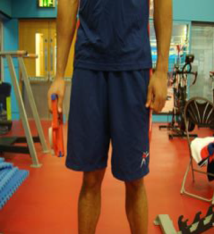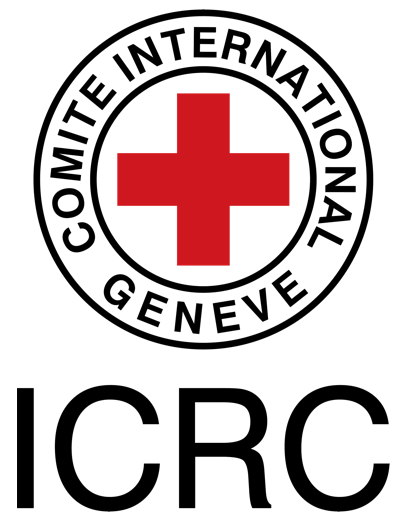Injury Type and Classification in Sport
Original Editor - Wanda van Niekerk based on the course by Ian Gatt
Top Contributors - Wanda van Niekerk, Kim Jackson, Lucinda hampton, Jess Bell, Nupur Smit Shah and Ewa Jaraczewska
Introduction[edit | edit source]
Being physically active and / or taking part in sports have many health benefits, but there is also the risk of injury. Sports injuries can occur anytime during training sessions or during competition. Various musculoskeletal connective tissues can be affected by injury. In sports epidemiology, injury surveillance is important as it is key to understanding injuries and it contributes to the development of injury prevention programmes.[1]
Definitions[edit | edit source]
The International Olympic Committee Injury and Illness Epidemiology Consensus group define injury as[2]:
“Injury is tissue damage or other derangement of normal physical function due to participation in sports, resulting from rapid or repetitive transfer of kinetic energy.”
Classification of an injury refers to "the process of describing or categorising an injury (i.e. by its location, mechanism or underlying pathology)"[3]
The grade of an injury refers to the severity of the injury.[3]
Classification of Injuries[edit | edit source]
Relationship of Injury to Sports Activity[edit | edit source]
Injuries may result[2]:
- Directly from participation in sport (can be during competition or training)
- Examples of this include: collision between players or overuse from repetitive training
- Indirectly from participation in activities related to competition or training
- Example: athlete slipping and sustaining an injury when in the Olympic village
- Activities not related to participation in sports
- Example: an athlete is involved in a car crash
Mode of Onset[edit | edit source]
Traditionally injuries are classified as injuries with a sudden onset (acute injury) or injuries with a gradual onset (overuse), but one also needs to consider an acute injury due to overuse.[2]
- Acute episode = sudden injury because of an exchange of large quantities of kinetic energy (collision between athletes)
- Mechanism is acute, and the presentation is sudden onset
- Overuse episode = gradual accumulation of low energy transfer over time (development of tendinopathy induced by repetitive movement or stress fracture)
- Mechanism is repetitive, and the presentation is a gradual onset
- Acute episode due to overuse = combination of both mechanisms ( for example an athlete with a repetitive training regime resulting in tendinopathy or tendon weakness, but sustains an acute tendon tear during a jump)
- Mechanism is repetitive, and the presentation is a sudden onset
Often a thorough subjective assessment and history taking will provide insight into the mode of onset. Radiological investigations may also be helpful in determining if an injury was an acute episode or whether it was an acute episode due to overuse.[4]
| Mechanism | Presentation | Example |
|---|---|---|
| Acute | Sudden onset |
|
| Repetitive | Gradual onset |
|
| Repetitive | Sudden onset |
|
Mechanism of Injury[edit | edit source]
This can be as a result of direct contact or non-contact mechanisms.[2]
| Injury | Type of Contact | Example |
|---|---|---|
| Non-contact | No evidence of disruption of a player's movement patterns | Basketball player landing and twisting ankle with no contact with other players |
| Contact
Indirect |
Through another athlete | ACL tear in a football player landing off-balance after being pushed on his shoulder by an opponent while in the air |
| Contact
Indirect |
Through an object | Downhill skier suffers concussion from a crash after hitting the gate with his knee |
| Contact
Direct |
With another athlete | Rugby player sustains an ACL tear as a result of a direct tackle to the knee |
| Contact
Direct |
With an object | Volleyball player being hit in the face by a spiked ball, resulting in a concussion |
Body Region Categories[edit | edit source]
Injuries can be further classified into the specific body region and more specifically the area involved.[2]
| Region | Body Area | Region | Body Area |
|---|---|---|---|
| Head and neck | Head
Neck |
||
| Upper limb | Shoulder
Upper arm Elbow Forearm Wrist Hand |
Lower Limb | Hip/groin
Thigh Knee Lower leg Ankle Foot |
| Trunk | Chest
Thoracic spine Lumbosacral Abdomen |
Unspecified | Region unspecified |
| Lower limb | Hip/groin
Thigh Knee Lower leg Ankle Foot |
Multiple regions | Single injury crossing ≥ 2 areas |
Tissue and Pathology Type Categories[edit | edit source]
Further classification can be to the specific tissue type and pathology involved.[2] Table 4 indicates the main tissue and pathology types. You can also have a look at Table 5 in this article for more detail and notes on these categories: International Olympic Committee Consensus Statement: Methods for Recording and Reporting of Epidemiological Data on Injury and Illness in Sports 2020 (Including the STROBE Extension for Sports Injury and Illness Surveillance (STROBE-SIIS)). For example, Tendinopathy includes the paratenon, partial tear and tendon subluxation and bone stress injury will include bone marrow oedema, stress fracture and periostitis.
| Tissue | Pathology Type | Tissue | Pathology Type |
|---|---|---|---|
| Muscle/tendon | Muscle injury
Muscle contusion Muscle compartment syndrome Tendinopathy Tendon rupture |
Ligament/Joint capsule | Joint sprain (ligament tear or acute instability episode)
Chronic instability |
| Nervous | Brain/spinal cord injury
Peripheral nerve injury |
Superficial tissue/Skin | Contusion (superficial)
Laceration Abrasion |
| Bone | Fracture
Bone stress injury Bone contusion Avascular necrosis Physis injury |
Vessels | Vascular trauma |
| Cartilage/Synovium/Bursa | Cartilage injury
Arthritis Synovitis/capsulitis Bursitis |
Stump | Stump injury |
| Internal organs | Organ trauma | Non-specific | Injury without tissue type specified |
See also: Sport Injury Classification for more detail on classifying ligament, tendon and bone and articular cartilage injuries.
Muscle Classification[edit | edit source]
Traditional Classification Systems[edit | edit source]
Muscle injuries are a common injury in sports. Historically a three-tier grading system based on clinical signs had been used to guide the prognosis of a muscle strain. Grading systems are useful in that it provides an indication of the severity or extent of the injury. With imaging advancements such as MRI and Ultrasonography, there is now the benefit of combining clinical and radiological findings and this has led to “new” muscle injury grading and classification systems over the last couple of years.[5]
The table below is from the Munich Consensus statement on Terminology and classification of muscle injuries in sport and provide an overview of previous muscle injury classification systems.[6]
| O'Donoghue
1962 |
Ryan 1969
(initially for quadriceps) |
Takebayashi 1995, Peetrons 2002
(Ultrasound-based) |
Stoller 2007
(MRI-based) | |
|---|---|---|---|---|
| Grade I | No appreciable tissue tearing,
No loss of function or strength, Low-grade inflammatory response |
Tear of few muscle fibres,
Facia in tact |
No abnormalites or diffuse bleeding with/without focal fibre rupture,
less than 5% of the muscle involved |
MRI-negative = 0% structural damage, Hyperintense oedema with or without haemorrhage |
| Grade II | Tissue damage,
Musculotendinous unit strength reduced, Some residual function |
Moderate amount of fibres torn,
Facia in tact |
Partial rupture: focal fibre rupture more than 5% of the muscle involved with/without fascial injury | MRI-positive with tearing up to 50% of the muscle fibres.
Possible hyperintense focal defect and partial retraction of muscle fibres |
| Grade III | Complete tear of musculotendinous junction,
Complete loss of function |
Many fibres torn with partial tearing of fascia | Complete muscle rupture with retraction,
fascial injury |
Muscle rupture = 100% structural damage.
Complete tearing with or without muscle retraction |
| Grade IV | none | Complete tear of the muscle and fascia of the muscle-tendon unit | none | none |
Modern muscle injury classification systems[edit | edit source]
Munich Consensus System
- International clinical and basic science experts developed a comprehensive muscle injury classification and grading system.[6]
- Key points from Munich Consensus System[6]:
- Classification differentiates between direct (contusion and laceration) and indirect muscle injury
- Indirect muscle injuries further classified as functional or structural injuries
- Further subclassified into the type of injury and subclassified into either: diagnostic group (e.g. fatigue induced muscle disorder, delayed onset muscle soreness (DOMS)); muscle or spine-related neuromuscular disorder; severity grade (minor partial, moderate, subtotal, complete or avulsion).
- Muscle injury is approached in a comprehensive way and includes descriptors such as acute, overuse, direct and indirect injury.
Read the full article here: Terminology and classification of muscle injuries in sport: The Munich consensus statement[6]
British athletics system
- Pollock et al[8] designed a classification for non-contact muscle injuries. The system grades injury from 0 – 4, based on clinical and MRI features. The injury is then sub-classified further to reflect the principle anatomic structures involved: a = myofascial; b = within muscle usually at the musculotendinous junction; c = intra-tendinous tears
Grading
- Grade 0 injuries – MRI negative and described as a “focal neuromuscular injury” or a muscle injury consistent with DOMS. If there is suspicion of a neural component involved - N can be applied as additional differentiator
- Grades 1 -3 refer to small, moderate or extensive tears respectively to the muscle tissue (determined by the extent of oedema and tissue disruption, as well as by tissue involved)
- Grade 4 refer to complete tears of either muscle or tendon
- BAMIC (British Athletics Muscle Injury Classification) provides a framework for clinical reasoning and rehabilitation decision-making[9] Read the full article here: British athletics muscle injury classification: a new grading system[8]
Chan System
- Chan et al[10] proposed a 3-layered anatomical classification system - this is mainly an imaging-based classification system
- The injury’s anatomical location is: proximal musculotendinous junction, muscle or distal musculotendinous junction
- The injury is then sub-classified as proximal, middle or distal
- Thereafter the injury is defined by the principle tissue involved (e.g. intramuscular, myofascial, perifascial, myotendinous or a combination)
- Read this article here: Acute muscle strain injuries: a proposed new classification system[11]
Barcelona System
- The medical department of FC Barcelona and international colleagues proposed a muscle injury classification and grading system based on 4 tiers/layers[12]
- MLG-R System[12]
- M - Mechanism of injury
- L - Location of injury
- G - Grading of severity
- R - Number of muscle re-injuries
- From clinical history – mechanism of injury (direct (D) or indirect (I))
- Indirect injuries are further identified as sprinting or stretch related
- Second and third identifiers are MRI variables – anatomical location and grade of injury
- Fourth identifier relates to re-injury status
- Read this study here: Muscle Injuries in Sports: A New Evidence-Informed and Expert Consensus-Based Classification with Clinical Application[12]
Cohen system
- Developed a hamstring injury classification system[13]
- Specifically for professional American football players
- Novel scoring system based on age and a range of MRI variables
- Read more about this here: Hamstring injuries in professional football players: magnetic resonance imaging correlation with return to play[13]
Grading based on connective tissue injury
- Prakash et al[14] proposed a MRI grading system to be used to assess the extent of injury and the integrity of connective tissue structures involved
- Grade 0 -oedema or fluid adjacent to intact connective tissue (tendon/aponeurosis/epimysium) without myofibril detachment
- Grade 1 - myofibril detachment without connective tissue change
- Grade 2 - myofibril detachment with adjacent connective tissue increased signal, delamination or defect, but no retraction
- Grade 3 - myofibril detachment with adjacent connective tissue retraction indicating failure
Table 6 provides an overview of some of the newer muscle injury classification systems.
| Chan et al., 2012[10] | Mueller-Wolfahrt et al., 2013[6] | Pollock et al., 2014[8] | Valle et al., 2017[12] | Prakash et al., 2018[14] |
|---|---|---|---|---|
Grading based in radiological finding and site of lesion
|
A. Indirect muscle disorder/injury
Functional muscle disorder Type 1:
Type 2:
Structural muscle injury Type 3:
B. Direct muscle injury
|
|
|
MRI-based grading
|
Recent reviews investigating muscle injury classification systems[edit | edit source]
- Time for a paradigm shift in the classification of muscle injuries[3]
- Classification and grading of muscle injuries: a narrative review[15]
- An update on the grading of muscle injuries: a narrative review from clinical to comprehensive systems[16]
- Quality assessment of muscle injury classification in sports: a systematic literature review[17]
- Workshop on Muscle Injuries by Bruce Hamilton - New Zealand:
Structure vs Function[edit | edit source]
- Structure = Form
- Function = is the product of a structure which plays any specific role
"There is a close relationship between structure and function, however, if we consider that humans are complex, we can appreciate why function is not always directly linked to structure."[4] For example athletes participating at a high level, but if they would undergo imaging there may be indications of existing pathologies. The imaging may show that the form (structure) is compromised, but function is not. Some examples of this are:
- MRI findings were similar in symptomatic and asymptomatic shoulders of young elite swimmers. Asymptomatic shoulders may have many and various abnormalities on MRI, that may be radiologically significant but are not clinically significant.[19]
- Rajeswaran et al.[20] (2014) found a significant amount of underlying pathology in the lumbar spines of asymptomatic elite junior tennis players that were not clinically detectable.[20]
- A high prevalence of asymptomatic osteochondral lesions with subchondral bone marrow oedema in the foot and ankle of elite professional soccer players have been reported.[21]
Considering that form may be affected but not function, this highlights again the biopsychosocial element and an holistic approach towards an athlete. Also, it highlights the consideration of objective and quantifiable information when managing injuries and understanding function.[4] An example of taking this approach is:
The Takei Handheld Dynamometer: An Effective Clinical Outcome Measure Tool for Hand and Wrist Function in Boxing[22]
- longitudinal retrospective injury surveillance of the Great Britain boxing squad from 2010 till 2014
- Findings[22]:
- a difference of less than 15% between left and right hand/wrist power grip measures is considered normal
- a difference of 20% between left and right hand/wrist power grip measures is considered indicative of pathology
- a difference of more than 20% between left and right hand/wrist power grip measures is considered highly indicative of pathology
- In a cohort of elite amateur boxers, the Takei Handheld Dynamometer was shown to be reliable and valid in detecting significant hand and wrist injuries and can be used as an objective marker to assess injury, progression of rehabilitation and training availability.[22]
General Guidelines[edit | edit source]
- Appreciate the diverse type of injuries and classifications and consider the clinical application of this.[4]
- Consider the difference between sudden (acute) vs gradual (repetitive) vs sudden (repetitive) onset.[4]
- Think about structure vs function and use objectivity to assist in injury management, training availability and rehabilitation.[4]
References[edit | edit source]
- ↑ Ross AG, Donaldson A, Poulos RG. Nationwide sports injury prevention strategies: A scoping review. Scandinavian Journal of Medicine & Science in Sports. 2021 Feb;31(2):246-64.
- ↑ 2.0 2.1 2.2 2.3 2.4 2.5 2.6 2.7 2.8 2.9 International Olympic Committee Injury and Illness Epidemiology Consensus Group, Bahr R, Clarsen B, Derman W, Dvorak J, Emery CA, Finch CF, Hägglund M, Junge A, Kemp S, Khan KM. International Olympic Committee consensus statement: methods for recording and reporting of epidemiological data on injury and illness in sports 2020 (including the STROBE extension for sports injury and illness surveillance (STROBE-SIIS)). Orthopaedic journal of sports medicine. 2020 Feb 14;8(2):2325967120902908
- ↑ 3.0 3.1 3.2 Hamilton B, Alonso JM, Best TM. Time for a paradigm shift in the classification of muscle injuries. Journal of sport and health science. 2017 Sep 1;6(3):255-61.
- ↑ 4.0 4.1 4.2 4.3 4.4 4.5 Gatt, I. Injury type and classification. Plus. Course. 2022
- ↑ Hamilton B, Pollock N, Reurink G, Vos RJ, Purdam C, Thorborg K. Muscle Injury Classification and Grading Systems. In Prevention and Rehabilitation of Hamstring Injuries 2020 (pp. 189-198). Springer, Cham.
- ↑ 6.0 6.1 6.2 6.3 6.4 6.5 Mueller-Wohlfahrt HW, Haensel L, Mithoefer K, Ekstrand J, English B, McNally S, Orchard J, van Dijk CN, Kerkhoffs GM, Schamasch P, Blottner D. Terminology and classification of muscle injuries in sport: the Munich consensus statement. British journal of sports medicine. 2013 Apr 1;47(6):342-50.
- ↑ Norris Health. Munich consensus on muscle injury in sport. Available from: https://www.youtube.com/watch?v=PhCxzDEE6Vc [last accessed 4/03/2022]
- ↑ 8.0 8.1 8.2 Pollock N, James SL, Lee JC, Chakraverty R. British athletics muscle injury classification: a new grading system. British journal of sports medicine. 2014 Sep 1;48(18):1347-51.
- ↑ Macdonald B, McAleer S, Kelly S, Chakraverty R, Johnston M, Pollock N. Hamstring rehabilitation in elite track and field athletes: applying the British athletics muscle injury classification in clinical practice. British journal of sports medicine. 2019 Dec 1;53(23):1464-73.
- ↑ 10.0 10.1 Chan O, Del Buono A, Best TM, Maffulli N. Acute muscle strain injuries: a proposed new classification system. Knee Surgery, Sports Traumatology, Arthroscopy. 2012 Nov;20(11):2356-62.
- ↑ Chan O, Del Buono A, Best TM, Maffulli N. Acute muscle strain injuries: a proposed new classification system. Knee Surgery, Sports Traumatology, Arthroscopy. 2012 Nov;20(11):2356-62.
- ↑ 12.0 12.1 12.2 12.3 Valle X, Alentorn-Geli E, Tol JL, Hamilton B, Garrett WE, Pruna R, Til L, Gutierrez JA, Alomar X, Balius R, Malliaropoulos N. Muscle injuries in sports: a new evidence-informed and expert consensus-based classification with clinical application. Sports medicine. 2017 Jul;47(7):1241-53.
- ↑ 13.0 13.1 Cohen S.B., Towers J.D., Zoga A., Irrgang J.J., Makda J., Deluca P.F. Hamstring injuries in professional football players: magnetic resonance imaging correlation with return to play. Sports Health. 2011;3:423–430
- ↑ 14.0 14.1 Prakash A, Entwisle T, Schneider M, Brukner P, Connell D. Connective tissue injury in calf muscle tears and return to play: MRI correlation. British journal of sports medicine. 2018 Jul 1;52(14):929-33.
- ↑ Hamilton B, Valle X, Rodas G, Til L, Grive RP, Rincon JA, Tol JL. Classification and grading of muscle injuries: a narrative review. British journal of sports medicine. 2015 Mar 1;49(5):306-.
- ↑ Grassi A, Quaglia A, Canata GL, Zaffagnini S. An update on the grading of muscle injuries: a narrative review from clinical to comprehensive systems. Joints. 2016 Jan;4(01):039-46.
- ↑ SantAnna JP, de Almeida AM, Pedrinelli A, Hernandez AJ, Fernandes TL. Quality assessment of muscle injury classification in sports: a systematic literature review. Muscles, Ligaments & Tendons Journal (MLTJ). 2018 Apr 1;8(2).
- ↑ Aspetar. Workshops on Muscle Injuries by Bruce Hamilton - New Zealand. Available from: https://www.youtube.com/watch?v=ja3hE3v2RZs [last accessed 05/03/2022]
- ↑ Celliers A, Gebremariam F, Joubert G, Mweli T, Sayanvala H, Holtzhausen L. Clinically relevant magnetic resonance imaging (MRI) findings in elite swimmers’ shoulders. SA Journal of Radiology. 2017;21(1).
- ↑ 20.0 20.1 Rajeswaran G, Turner M, Gissane C, Healy JC. MRI findings in the lumbar spines of asymptomatic elite junior tennis players. Skeletal radiology. 2014 Jul;43(7):925-32.
- ↑ Bezuglov E, Khaitin V, Lazarev A, Brodskaia A, Lyubushkina A, Kubacheva K, Waśkiewicz Z, Petrov A, Maffulli N. Asymptomatic foot and ankle abnormalities in elite professional soccer players. Orthopaedic Journal of Sports Medicine. 2021 Jan 29;9(1):2325967120979994.
- ↑ 22.0 22.1 22.2 Gatt I, Smith-Moore S, Steggles C, Loosemore M. The Takei handheld dynamometer: An effective clinical outcome measure tool for hand and wrist function in boxing. Hand. 2018 May;13(3):319-24.







